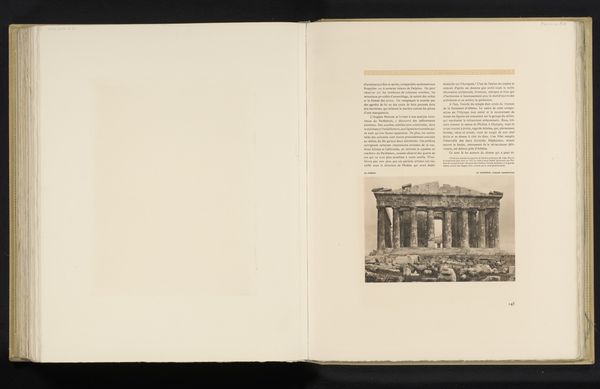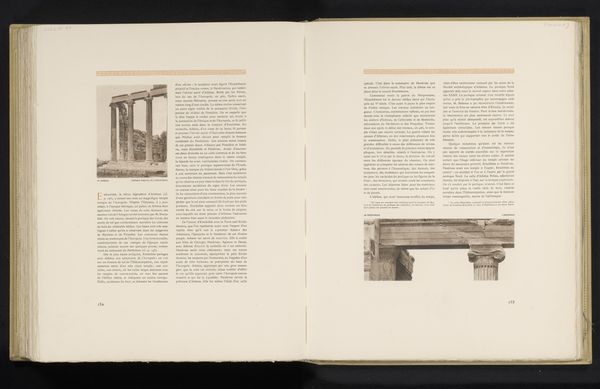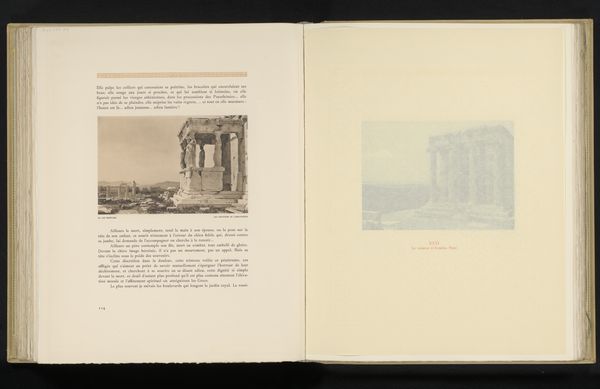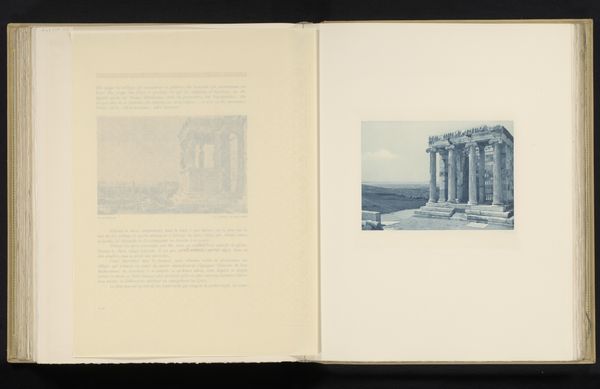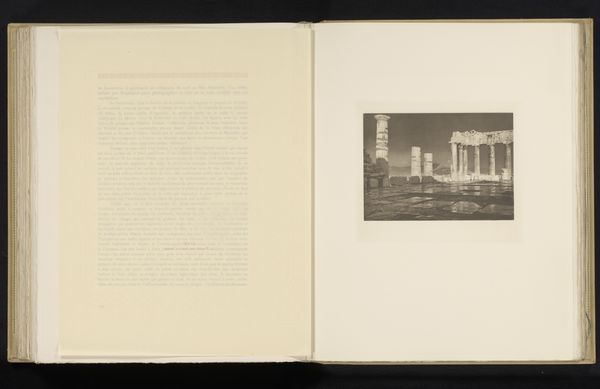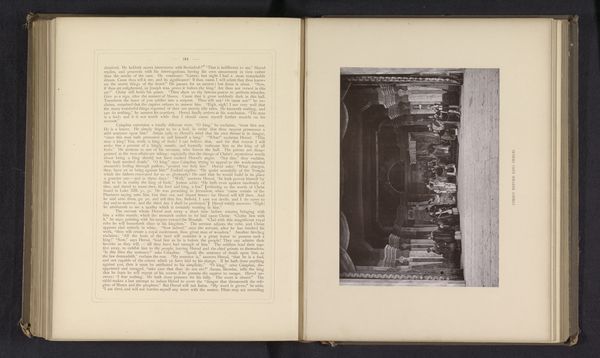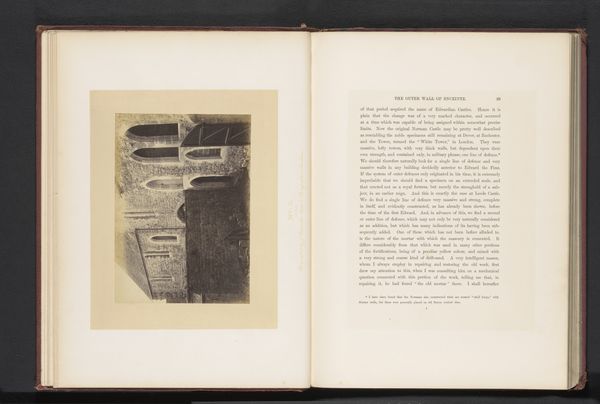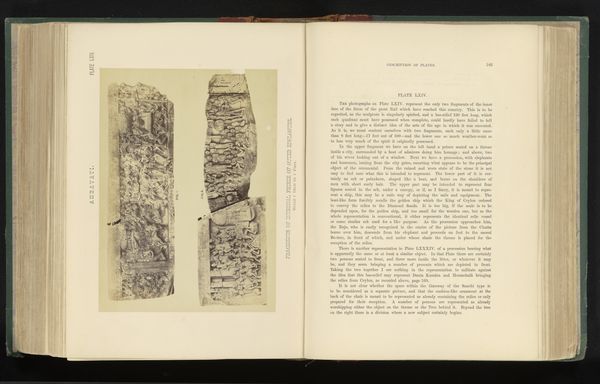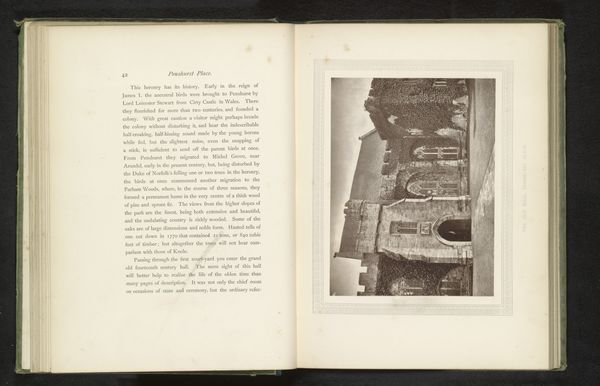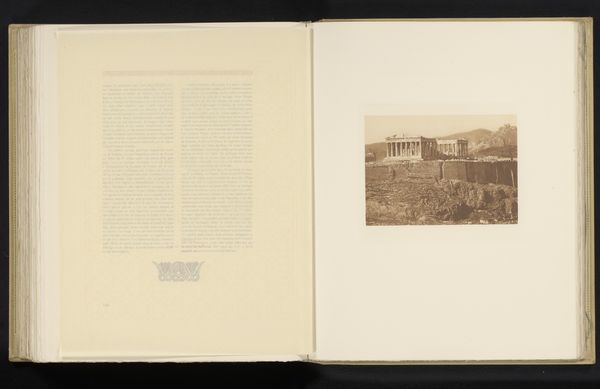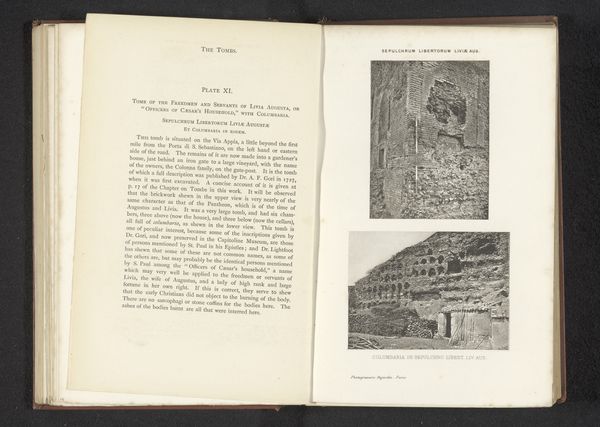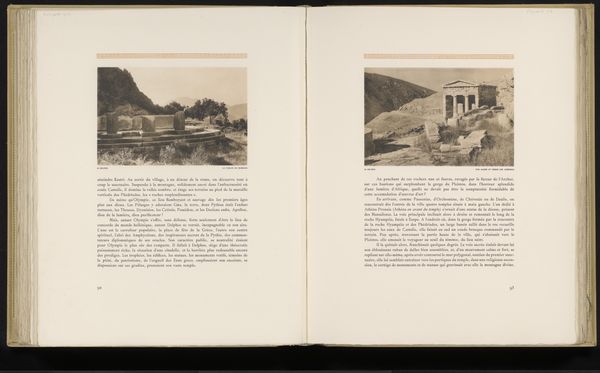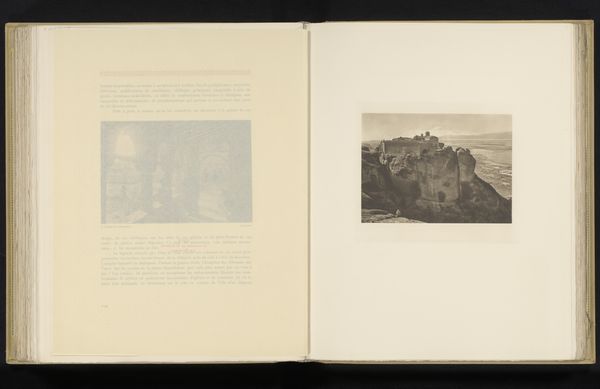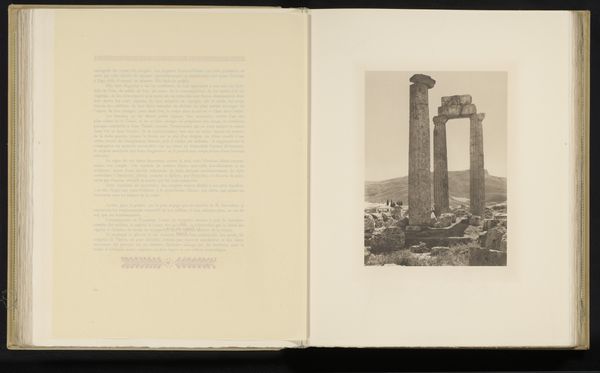
print, photography, sculpture, architecture
# print
#
landscape
#
photography
#
ancient-mediterranean
#
sculpture
#
paper medium
#
architecture
Dimensions: height 151 mm, width 225 mm
Copyright: Rijks Museum: Open Domain
Curator: This image captures details of the "Reliefs on the ceiling of the Tholos of Epidaurus," a photograph taken by Frédéric Boissonnas sometime before 1910. The prints depict ancient Greek architectural sculptures. Editor: Initially, it strikes me as an interesting interplay of light and shadow, accentuating the geometrical precision within the relief. Curator: Indeed, the organization of square patterns, embellished with floral motifs, is strikingly formalist. The structural repetition creates a powerful visual rhythm, an early example of pattern-making within the architectural discipline. Editor: Looking beyond the aesthetics, I wonder about the laborious process. The carvings involved shaping and fitting the material – probably marble, sourced and refined by countless artisans whose stories rarely surface in historical records. Curator: A fair point. One might argue the material presence and structural placement, forming a dialogue of symmetry and intricacy within a hallowed, reverberating space devoted to the deity Asclepius and dreams, reflect both aesthetic principles and philosophical ones. Editor: Yet, considering material realities invites broader contemplation. The physical handling of the sculptures – extracting the marble, sculpting the designs, installing it high overhead - points to hierarchies of skill, labor, and value encoded into these refined patterns and perfect geometry. Curator: True. Though my focus is more directed to a deconstruction of line, texture, and tone as evident components. What does the structural composition represent beyond the symbolic language, however, beyond these elements of form? It leads back into the cultural significance it reflects as a mirror image of the aesthetic standards embraced. Editor: Precisely! By studying how labor, technique, and materials intermingle we unravel connections between high art and common construction and reveal embedded social structures. It grants historical context to forms and structures. Curator: It provides a richer tapestry to analyze! Now considering all aspects together, I am intrigued further with these intricate relics. Editor: It gives us some new perspectives. It’s quite a view.
Comments
No comments
Be the first to comment and join the conversation on the ultimate creative platform.
